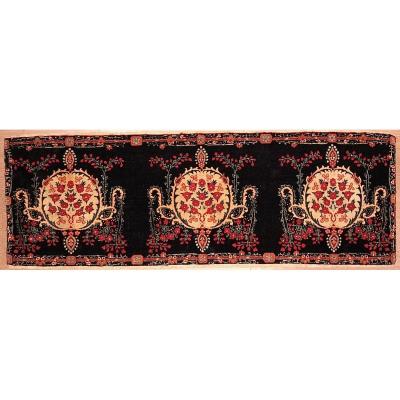Carpet restored in the rules of the art by a Master weaver (see photos).
Located in the south-east of Iran, at an altitude of 1,800 m, the city of Kerman has the reputation of being one of the most prestigious centers in the production of carpets. The village of Ravar is credited with the most beautiful pieces in the Kerman region. The name of "ravar" has been transformed over time into "lavar" and "to wash".
This magnificent kerman laver consists of three ivory medallions reminiscent of vases. Bouquets of flowers as well as "boteh" give a elegant and refined side to this major achievement. All the details of the design "stand out" all the more on this plain navy blue background (kafzadé). A discreet border surrounds the carpet.
A little history ... Marco Polo (1254-1324 ) who made a stay in Kerman, wrote about this city. Here are some passages: "Creman is a kingdom in Persia". "In this kingdom are born in great abundance the stones which are called Turquoises". "The ladies and young ladies embroider very finely and very nobly, with the needle, on silk sheets of all the colors representing animals, birds, trees, flowers. "It should be noted that at that time it is about shawls and not carpet. At the Meched Carpet Museum (Khorassan, north-eastern Iran), a fragmen t of Kerman rugs dating back to 1476. The achievements of Kerman workshop rugs gained momentum during the Safavid dynasty (1501-1732) and more precisely under the reign of Shahs Abbas (1588-1529) which corresponds to the golden age of the academic carpet in Persia. Wanting to develop art in Persia, Shah Abbas created schools to train Ustads (master designer weavers). The latter made 'cartons' of carpets. The designs consisted of medallion motifs, hunting scenes, branches of flowers, trees, gardens, mihrabs but also mosaics. Major carpet designs were made in the cities of Kashan, Kerman, Tabriz, Meched and Isfahan. The carpet became academic.
A sudden stop in the production of Kerman carpets occurred with the fall of the Safavid dynasty, in particular due to Afghan invasions. In 1794, under the Qadjar dynasty, the city of Kerman was destroyed. It was from the 19th century that workshops were recreated by local artisans but also by European companies for the European market and from 1920 for the American market.
We ship our carpets and kilims by Chronopost or Colissimo, at our expense (up to 30 kg) in mainland France and Europe. Do not hesitate to contact us by phone or email.









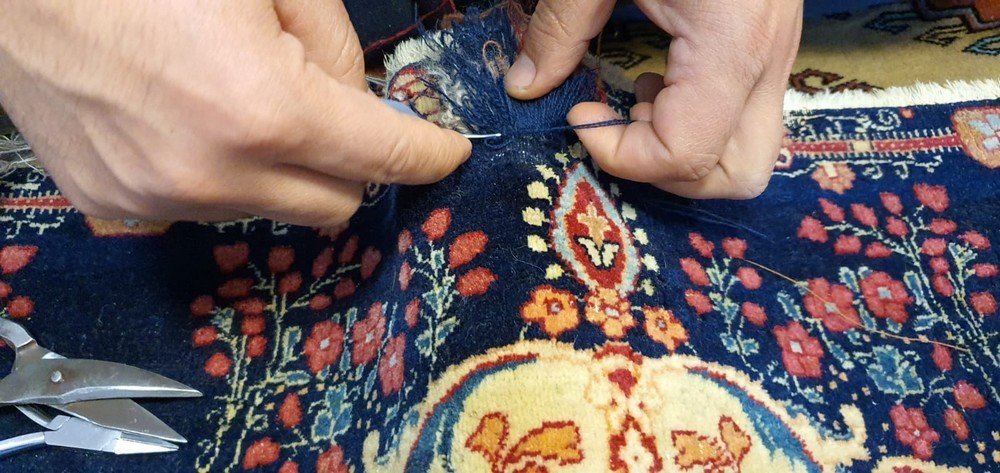
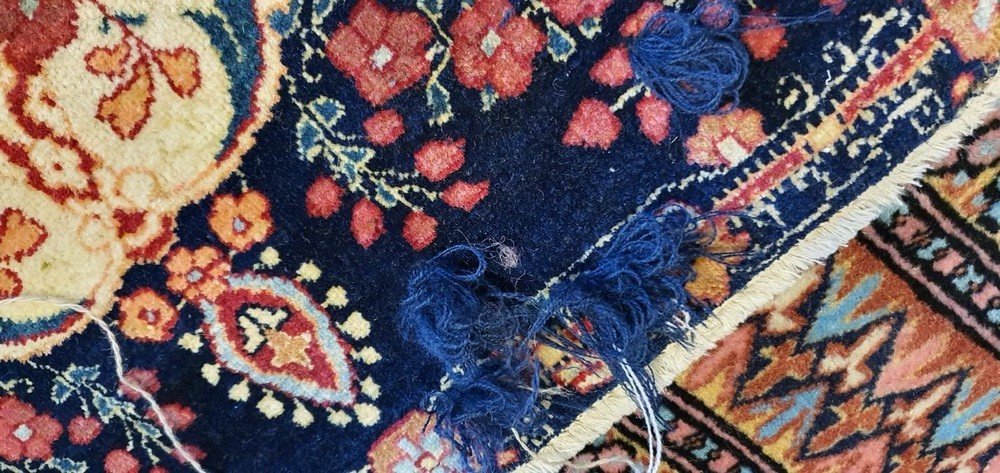





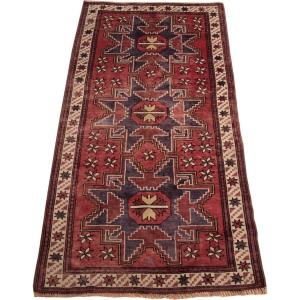


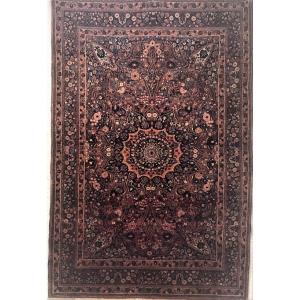








 Le Magazine de PROANTIC
Le Magazine de PROANTIC TRÉSORS Magazine
TRÉSORS Magazine Rivista Artiquariato
Rivista Artiquariato
